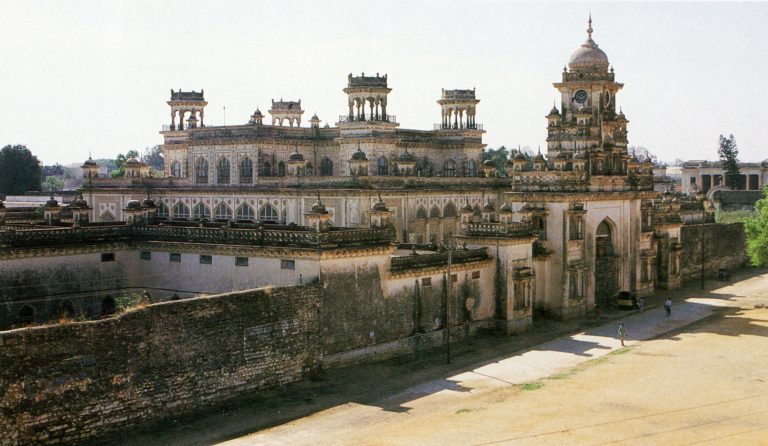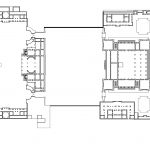Location
Located on the Khilwat road leading south from Lad Bazar – Chowk crossroad.

Description
The construction was started in the period of Nizam Salabat Jung (1718 – 63), but it was Nizam Afzar-ud-Dawla Bahadur who saw that the palace was completed between the years 1857 and 1869.
The earliest description of the palace dates from the 1750s, when French troops under Bussy were housed nearby, but it is best known from the 1840s on, when Nasiruddawlah started to refashion it. His successor Afzaluddawlah completed the palace, its main feature being four freestanding pavilions facing each other around a central oblong reservoir. Hence Chowmahalla, “Chow,” a variation of Urdu word for four, and “mahalla” palace. Afzaluddawlah named two pavilions after himself: Afzal Mahal and Tahniyat Mahal (Tahniyat was among his names). The east and west pavilions are called, respectively: Aftab (sun) Mahal, and Mahtab (moon) Mahal. The western pavilion served as the home school where Mahbub Ali Khan attended classes under the British tutor brothers Claude and John Clerk.
The Chowmahalla was spread over 45 acres at the apogee of its development, but has shrunk to a mere 12. Now it consists of two courtyards, mundanely referred to as “A” and “B.” A series
of other portions of the palace—nine in total— now treated as separate buildings—were called the havelis of the following: Bakhshi Begum; Chandni Begum; Manjli Begum; Khilwat Mahal; Moti Bangla; Raushan Bangla; Shadi Khanah; Tosha Khanah; and Panj/Panch Mahalla. Some of the most important durbars of the Asaf Jahi rulers were held in this palace, including the last significant one in April 1967 when Mukarram Jah was proclaimed the titular Nizam. Since then the palace had fallen into disuse and neglect, until unstinting professional work led by Rahul Mehrotra successfully restored it in 2005.
Khilwat Khanah-yi Shahi, formerly considered part of the Chowmahalla Palace, dates from at least the 1750s and is located in Moti Gali off the Lad Bazaar. Khilwat (or Khalwat) means privacy and this may be because the palace was used for the private audiences the Nizams granted to their subjects. Shahi Jilu Khanah, more accurately called Julu Khanah, is the vestibule, or forecourt of the Chowmahalla palace that is marked by an archway visible off of Lad Bazaar. At the Julu Khanah, the troops traditionally assembled for parade when the Nizam entered or left the palace. It was also the site where the visiting nobles dismounted and proceeded on foot for the inner enclosure of the palace for a private audience. Nizam al-Mulk Asaf Jah built it as the main gateway to the palace.
Existing Condition
The Palace was restored in the year 2005 and is used as a museum partially.
Archive
Contributors
NIUM

